 |
|
|
|
In the Forums... |

Posted: November 11th, 2002
When USB was first introduced, the PC add-on market was revolutionized. Designed to meet Microsoft's plug-n-play requirements, USB has become the most widely used standard for connecting peripherals to your PC. USB is now connecting just about every component available for a PC or notebook. The developers of this popular standard saw the immense benefits, as well as the need for a faster bus. USB 2.0 or high-speed USB, as it's also known, was developed. Today, most motherboards come with USB 2.0 support for 4 or more ports. Generally, 2 ports are located on the back of the motherboard, but in some cases you'll find 4, while any other USB ports will be available thru the addition of an external hub or on the front of some cases, for example the Antec 1080AMG. Having to crawl under your desk to plug a cable in can be a hassle, and end-users and manufacturers alike, are looking to hubs to relieve the problem.
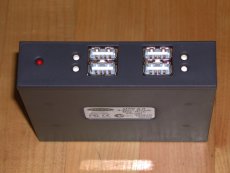 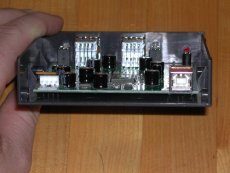
The hub has a red LED, which indicated the power is on. There are also green LEDs next to each port. These LEDs light up when you plug a device in. The back of the hub is open to allow you to plug the power and USB cable in. Belkin has simplified the installation by including a high-speed USB cable, which eliminates the need for an end-user to know anything about motherboard pinouts. You simply plug the cable in, and run it through the case, out the back and plug it into an available USB 2.0 port on the back of your PC. The important thing to note here is that this hub doesn't add USB 2.0 functionality to your PC, it just extends your PCs existing USB 2.0 to the front of your PC, while at the same time adding additional ports.
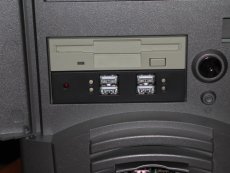 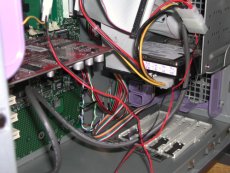
The hub is the same size and a 3.25 inch floppy drive, and is held in place with the included screws; two per side. I installed the hub in an Antec 1080AMG case, which has two 3.25 inch bays. The way the case is set up, I was only able to use two of the screws, but that seemed to hold the hub in place just fine. After plugging the included cable into the back of the bay, and running it through the case to the USB connector in the back, I plugged the Molex power cable in, and fired up the machine. Windows XP Pro immediately recognized the hub, and I was able to use it without installing any drivers.
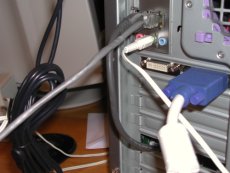 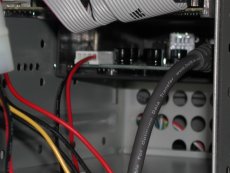
As you can see from the pictures above, I've run the cable out of the case through an unused expansion slot on the back. The cable Belkin provides is easily long enough to fit most cases. If you are going to install this hub, I would recommend doing a little cable management, such as buying cable tie stays, and running the cable along the back of the case on those where the motherboard tray doesn't come out. That will get it out of the way. If you do this, make sure you give yourself a little slack on either end so you can unplug the hub for whatever reason. I would consider it a permanent install, but you never know when you're going to need to tear things apart for an upgrade or repair.
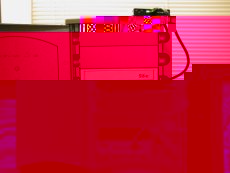
|
||
|
| |||
|---|---|---|---|